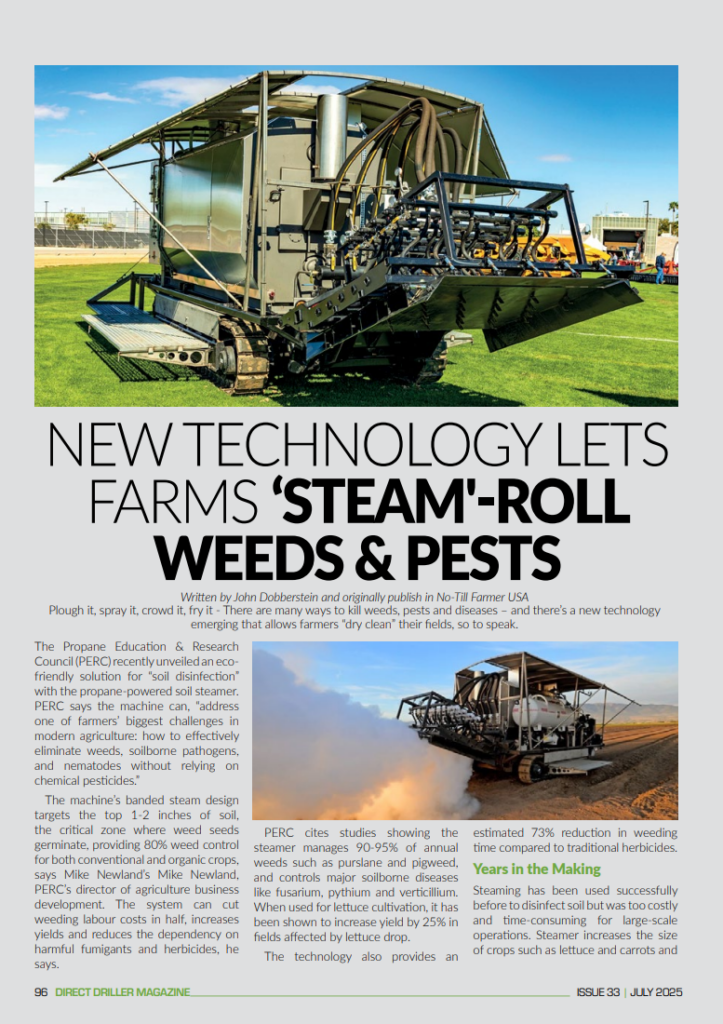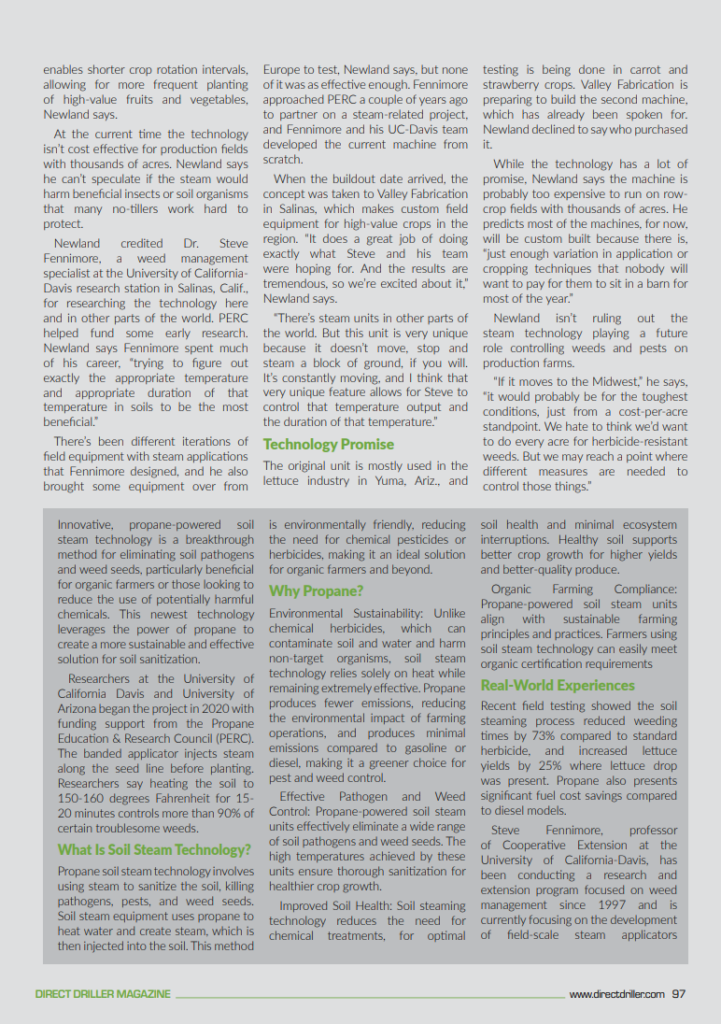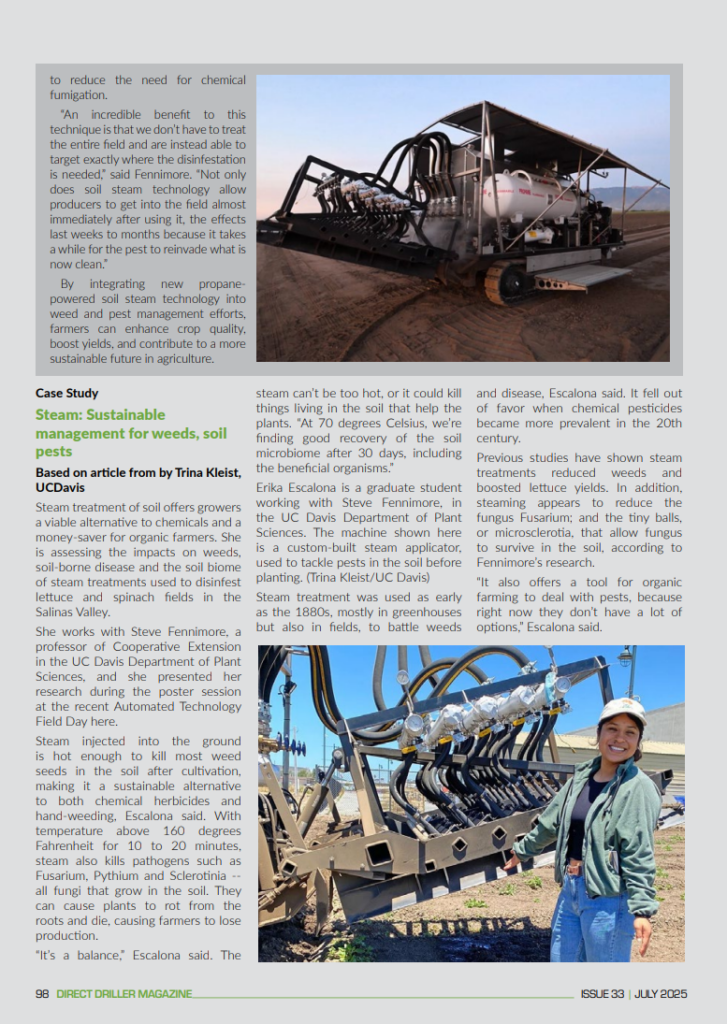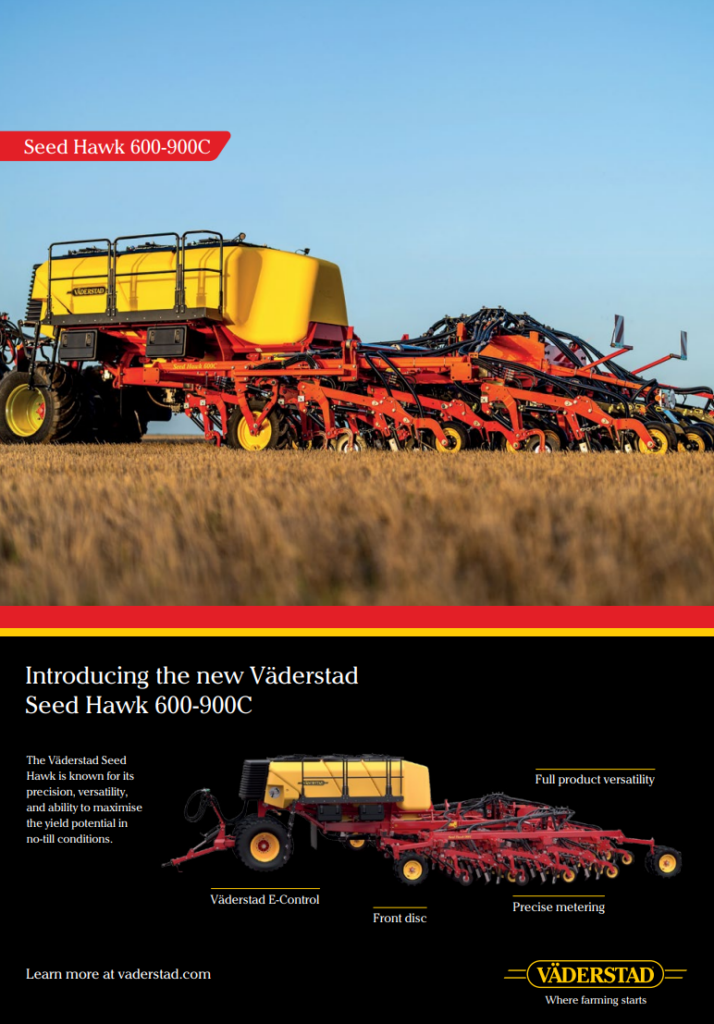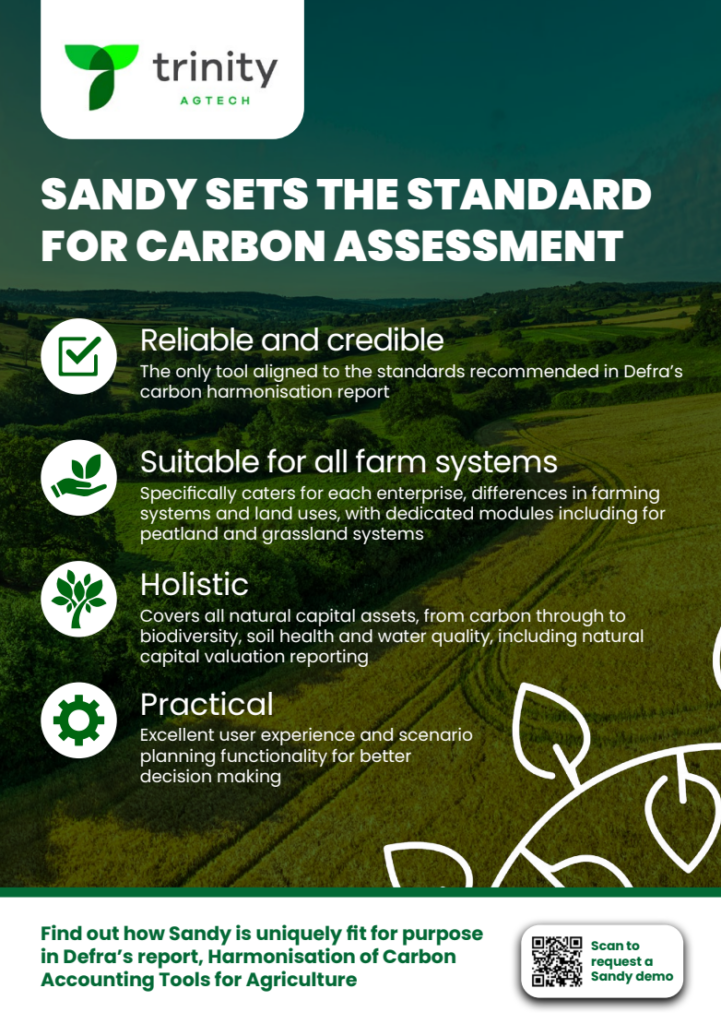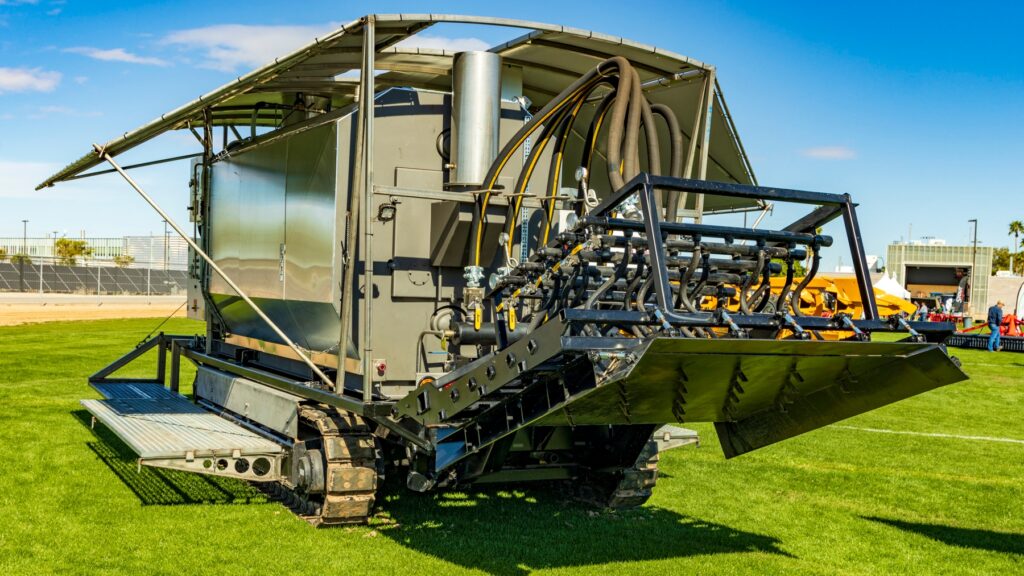Written by John Dobberstein and originally publish in No-Till Farmer USA
Plough it, spray it, crowd it, fry it – There are many ways to kill weeds, pests and diseases – and there’s a new technology emerging that allows farmers “dry clean” their fields, so to speak.
The Propane Education & Research Council (PERC) recently unveiled an eco-friendly solution for “soil disinfection” with the propane-powered soil steamer. PERC says the machine can, “address one of farmers’ biggest challenges in modern agriculture: how to effectively eliminate weeds, soilborne pathogens, and nematodes without relying on chemical pesticides.”
The machine’s banded steam design targets the top 1-2 inches of soil, the critical zone where weed seeds germinate, providing 80% weed control for both conventional and organic crops, says Mike Newland’s Mike Newland, PERC’s director of agriculture business development. The system can cut weeding labour costs in half, increases yields and reduces the dependency on harmful fumigants and herbicides, he says.
PERC cites studies showing the steamer manages 90-95% of annual weeds such as purslane and pigweed, and controls major soilborne diseases like fusarium, pythium and verticillium. When used for lettuce cultivation, it has been shown to increase yield by 25% in fields affected by lettuce drop.
The technology also provides an estimated 73% reduction in weeding time compared to traditional herbicides.

Years in the Making
Steaming has been used successfully before to disinfect soil but was too costly and time-consuming for large-scale operations. Steamer increases the size of crops such as lettuce and carrots and enables shorter crop rotation intervals, allowing for more frequent planting of high-value fruits and vegetables, Newland says.
At the current time the technology isn’t cost effective for production fields with thousands of acres. Newland says he can’t speculate if the steam would harm beneficial insects or soil organisms that many no-tillers work hard to protect.
Newland credited Dr. Steve Fennimore, a weed management specialist at the University of California-Davis research station in Salinas, Calif., for researching the technology here and in other parts of the world. PERC helped fund some early research. Newland says Fennimore spent much of his career, “trying to figure out exactly the appropriate temperature and appropriate duration of that temperature in soils to be the most beneficial.”
There’s been different iterations of field equipment with steam applications that Fennimore designed, and he also brought some equipment over from Europe to test, Newland says, but none of it was as effective enough. Fennimore approached PERC a couple of years ago to partner on a steam-related project, and Fennimore and his UC-Davis team developed the current machine from scratch.
When the buildout date arrived, the concept was taken to Valley Fabrication in Salinas, which makes custom field equipment for high-value crops in the region. “It does a great job of doing exactly what Steve and his team were hoping for. And the results are tremendous, so we’re excited about it,” Newland says.
“There’s steam units in other parts of the world. But this unit is very unique because it doesn’t move, stop and steam a block of ground, if you will. It’s constantly moving, and I think that very unique feature allows for Steve to control that temperature output and the duration of that temperature.”
Technology Promise
The original unit is mostly used in the lettuce industry in Yuma, Ariz., and testing is being done in carrot and strawberry crops. Valley Fabrication is preparing to build the second machine, which has already been spoken for. Newland declined to say who purchased it.
While the technology has a lot of promise, Newland says the machine is probably too expensive to run on row-crop fields with thousands of acres. He predicts most of the machines, for now, will be custom built because there is, “just enough variation in application or cropping techniques that nobody will want to pay for them to sit in a barn for most of the year.”
Newland isn’t ruling out the steam technology playing a future role controlling weeds and pests on production farms.
“If it moves to the Midwest,” he says, “it would probably be for the toughest conditions, just from a cost-per-acre standpoint. We hate to think we’d want to do every acre for herbicide-resistant weeds. But we may reach a point where different measures are needed to control those things.”
Innovative, propane-powered soil steam technology is a breakthrough method for eliminating soil pathogens and weed seeds, particularly beneficial for organic farmers or those looking to reduce the use of potentially harmful chemicals. This newest technology leverages the power of propane to create a more sustainable and effective solution for soil sanitization.
Researchers at the University of California Davis and University of Arizona began the project in 2020 with funding support from the Propane Education & Research Council (PERC). The banded applicator injects steam along the seed line before planting. Researchers say heating the soil to 150-160 degrees Fahrenheit for 15-20 minutes controls more than 90% of certain troublesome weeds.
What Is Soil Steam Technology?
Propane soil steam technology involves using steam to sanitize the soil, killing pathogens, pests, and weed seeds. Soil steam equipment uses propane to heat water and create steam, which is then injected into the soil. This method is environmentally friendly, reducing the need for chemical pesticides or herbicides, making it an ideal solution for organic farmers and beyond.
Why Propane?
Environmental Sustainability: Unlike chemical herbicides, which can contaminate soil and water and harm non-target organisms, soil steam technology relies solely on heat while remaining extremely effective. Propane produces fewer emissions, reducing the environmental impact of farming operations, and produces minimal emissions compared to gasoline or diesel, making it a greener choice for pest and weed control.
Effective Pathogen and Weed Control: Propane-powered soil steam units effectively eliminate a wide range of soil pathogens and weed seeds. The high temperatures achieved by these units ensure thorough sanitization for healthier crop growth.
Improved Soil Health: Soil steaming technology reduces the need for chemical treatments, for optimal soil health and minimal ecosystem interruptions. Healthy soil supports better crop growth for higher yields and better-quality produce.
Organic Farming Compliance: Propane-powered soil steam units align with sustainable farming principles and practices. Farmers using soil steam technology can easily meet organic certification requirements.

Real-World Experiences
Recent field testing showed the soil steaming process reduced weeding times by 73% compared to standard herbicide, and increased lettuce yields by 25% where lettuce drop was present. Propane also presents significant fuel cost savings compared to diesel models.
Steve Fennimore, professor of Cooperative Extension at the University of California-Davis, has been conducting a research and extension program focused on weed management since 1997 and is currently focusing on the development of field-scale steam applicators to reduce the need for chemical fumigation.
“An incredible benefit to this technique is that we don’t have to treat the entire field and are instead able to target exactly where the disinfestation is needed,” said Fennimore. “Not only does soil steam technology allow producers to get into the field almost immediately after using it, the effects last weeks to months because it takes a while for the pest to reinvade what is now clean.”
By integrating new propane-powered soil steam technology into weed and pest management efforts, farmers can enhance crop quality, boost yields, and contribute to a more sustainable future in agriculture.
Case Study
Steam: Sustainable management for weeds, soil pests
Based on article from by Trina Kleist, UCDavis
Steam treatment of soil offers growers a viable alternative to chemicals and a money-saver for organic farmers. She is assessing the impacts on weeds, soil-borne disease and the soil biome of steam treatments used to disinfest lettuce and spinach fields in the Salinas Valley.
She works with Steve Fennimore, a professor of Cooperative Extension in the UC Davis Department of Plant Sciences, and she presented her research during the poster session at the recent Automated Technology Field Day here.
Steam injected into the ground is hot enough to kill most weed seeds in the soil after cultivation, making it a sustainable alternative to both chemical herbicides and hand-weeding, Escalona said. With temperature above 160 degrees Fahrenheit for 10 to 20 minutes, steam also kills pathogens such as Fusarium, Pythium and Sclerotinia — all fungi that grow in the soil. They can cause plants to rot from the roots and die, causing farmers to lose production.
“It’s a balance,” Escalona said. The steam can’t be too hot, or it could kill things living in the soil that help the plants. “At 70 degrees Celsius, we’re finding good recovery of the soil microbiome after 30 days, including the beneficial organisms.”

Erika Escalona is a graduate student working with Steve Fennimore, in the UC Davis Department of Plant Sciences. The machine shown here is a custom-built steam applicator, used to tackle pests in the soil before planting. (Trina Kleist/UC Davis)
Steam treatment was used as early as the 1880s, mostly in greenhouses but also in fields, to battle weeds and disease, Escalona said. It fell out of favor when chemical pesticides became more prevalent in the 20th century.
Previous studies have shown steam treatments reduced weeds and boosted lettuce yields. In addition, steaming appears to reduce the fungus Fusarium; and the tiny balls, or microsclerotia, that allow fungus to survive in the soil, according to Fennimore’s research.
“It also offers a tool for organic farming to deal with pests, because right now they don’t have a lot of options,” Escalona said.
